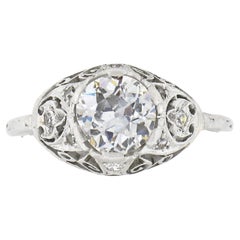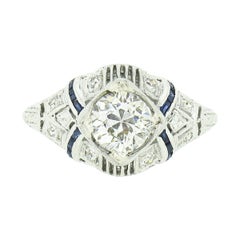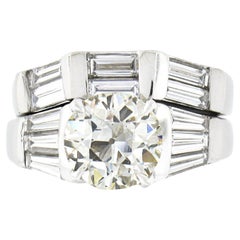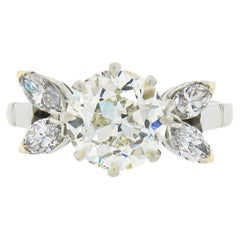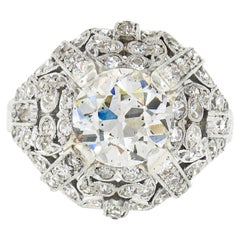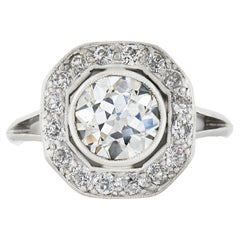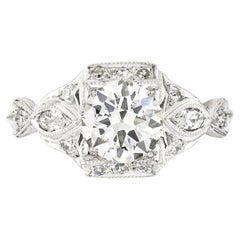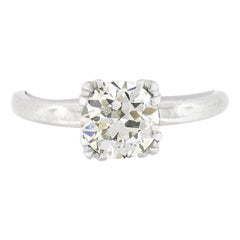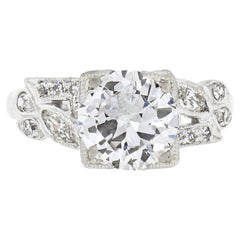Gia European Diamond
Antique Early 1900s Edwardian Engagement Rings
Diamond, Platinum
Early 20th Century Unknown Art Deco Solitaire Rings
Diamond, Sapphire, Platinum
Vintage 1980s Engagement Rings
Diamond, Platinum
Vintage 1940s Retro Engagement Rings
Diamond, Platinum
Antique Early 1900s Edwardian Dome Rings
Diamond, Platinum
Antique Early 1900s Edwardian Engagement Rings
Diamond, Platinum
Antique Early 1900s Edwardian Engagement Rings
Diamond, Platinum
Vintage 1920s Art Deco Engagement Rings
Diamond, Platinum
Vintage 1940s Art Deco Engagement Rings
Diamond, Platinum
Vintage 1930s Art Deco Engagement Rings
Diamond, Sapphire, Platinum
Antique Early 1900s Edwardian Engagement Rings
Diamond, 14k Gold, Yellow Gold, Platinum
Vintage 1920s Art Deco Link Bracelets
Diamond, Platinum
Antique 18th Century French Cocktail Rings
Diamond, 18k Gold, White Gold
Vintage 1920s Art Deco Engagement Rings
Diamond, 18k Gold
Vintage 1920s Art Deco Engagement Rings
Diamond, 18k Gold, White Gold
Antique Early 1900s French Edwardian Engagement Rings
Diamond, Platinum, White Gold, 18k Gold
Vintage 1920s Art Deco Cocktail Rings
Diamond, Emerald, Platinum
20th Century Victorian Engagement Rings
Diamond, Emerald, 18k Gold, Platinum
2010s Italian Art Deco Cocktail Rings
Diamond, 14k Gold, White Gold
21st Century and Contemporary American Art Deco Stud Earrings
Diamond, Ruby, Platinum
21st Century and Contemporary Solitaire Rings
Diamond, 18k Gold
2010s American Contemporary Clip-on Earrings
Diamond, White Diamond, Platinum
21st Century and Contemporary Solitaire Rings
Diamond, Platinum
21st Century and Contemporary European Stud Earrings
Diamond, Gold, 18k Gold, Silver
21st Century and Contemporary Unknown Contemporary Engagement Rings
Diamond, White Diamond, Gold, 14k Gold, White Gold, Yellow Gold
2010s American Dangle Earrings
Diamond, 18k Gold, Yellow Gold
Vintage 1930s Engagement Rings
Diamond, Platinum
Vintage 1920s Engagement Rings
Diamond, Platinum
20th Century Engagement Rings
Diamond, Platinum
21st Century and Contemporary European Contemporary Brooches
Diamond, Ruby, Gold, 14k Gold, Yellow Gold
21st Century and Contemporary Modern Loose Gemstones
Diamond
Early 20th Century European Victorian Three-Stone Rings
Diamond, White Diamond, Platinum
Vintage 1920s Engagement Rings
Diamond, Sapphire, Platinum
2010s European Art Deco Engagement Rings
Diamond, 14k Gold, White Gold
Early 20th Century American Art Deco Engagement Rings
Diamond, 14k Gold, White Gold
Antique 15th Century and Earlier Loose Gemstones
White Diamond
Vintage 1920s American Lever-Back Earrings
Diamond, Yellow Gold
21st Century and Contemporary Unknown Art Deco Engagement Rings
Diamond, Platinum
Vintage 1920s Unknown Art Deco Engagement Rings
Diamond, Platinum
Antique Early 1900s Engagement Rings
Diamond, Gold, 14k Gold, Yellow Gold
Antique 15th Century and Earlier Loose Gemstones
Pink Diamond
21st Century and Contemporary Unknown Art Deco Engagement Rings
Diamond, Platinum
Vintage 1950s Modern Engagement Rings
Diamond, Blue Diamond, Platinum
Early 20th Century Engagement Rings
Diamond, Gold, 14k Gold, Yellow Gold
2010s American Link Bracelets
Diamond, 18k Gold
Antique Early 1900s Edwardian Engagement Rings
Diamond, Platinum
Vintage 1920s Engagement Rings
Diamond, Platinum
Vintage 1920s Engagement Rings
Diamond, Platinum
Vintage 1960s Modern Engagement Rings
Diamond, Platinum
Vintage 1920s Engagement Rings
Diamond, Platinum
Vintage 1920s Engagement Rings
Diamond, Platinum
Antique 19th Century Engagement Rings
Diamond, Platinum
Vintage 1920s Engagement Rings
Diamond, Platinum
Vintage 1920s Engagement Rings
Diamond, Platinum
Vintage 1920s Engagement Rings
Diamond, Platinum
Antique Early 1900s Edwardian Engagement Rings
Yellow Diamond, Gold, 14k Gold, Yellow Gold
20th Century Edwardian Engagement Rings
Diamond, Platinum
Vintage 1950s Modern Cocktail Rings
Diamond, Onyx, Platinum
Vintage 1920s Engagement Rings
Diamond, Platinum
Vintage 1910s Engagement Rings
Diamond, Platinum
- 1
- ...
Gia European Diamond For Sale on 1stDibs
How Much is a Gia European Diamond?
The Legacy of Diamond in Jewelry Design
Antique diamond rings, diamond tiaras and dazzling vintage diamond earrings are on the wish lists of every lover of fine jewelry. And diamonds and diamond jewelry are primarily associated with storybook engagements and red-carpet grand entrances — indeed, this ultra-cherished gemstone has a dramatic history on its hands.
From “A Diamond Is Forever” to “Diamonds Are a Girl’s Best Friend,” pop culture has ingrained in our minds that diamonds are the most desired, the most lasting and the most valuable gemstone. But what makes the diamond so special? Each stone — whether it’s rubies, sapphires or another stone — is unique and important in its own right. April babies might claim diamonds for themselves, but just about everyone wants this kind of sparkle in their lives!
There are several factors that set diamonds apart from other stones, and these points are important to our gem education.
Diamonds are minerals. They are made up of almost entirely of carbon (carbon comprises 99.95 percent; the remainder consists of various trace elements). Diamonds are the hardest gemstones, ranking number 10 on the Mohs Hardness Scale. Even its name, diamond, is rooted in the Greek adamas, or unconquerable. The only object that can scratch a diamond is another diamond. Diamonds are formed deep within the earth at very high temperatures (1,652–2,372 degrees Fahrenheit at depths between 90 and 120 miles beneath the earth’s surface) and are carried up by volcanic activity. Diamonds are quite rare, according to the Gemological Institute of America, and only 30 percent of all the diamonds mined in the world are gem quality.
In the 1950s, the Gemological Institute of America developed the 4Cs grading system to classify diamonds: clarity, color, cut and carat weight. Not all diamonds are created equal (there are diamonds, and then there are diamonds). The value of the diamond depends on the clarity (flawless diamonds are very rare but a diamond's value decreases if there are many blemishes or inclusions), color (the less color the higher the grade), cut (how the diamond’s facets catch the light, certain cuts of diamonds show off the stone better than others) and carat weight (the bigger, the better).
When you start shopping for a diamond engagement ring, always prioritize the cut, which plays the largest role in the diamond's beauty (taking the time to clean your diamond ring at least every six months or so plays a role in maintaining said beauty). And on 1stDibs, a range of buying guides can be found for those in the market for antique engagement rings, vintage engagement rings or Art Deco engagement rings.
Shop antique and vintage diamond rings, diamond necklaces and other extraordinary diamond jewelry on 1stDibs.
- Are GIA diamonds worth more?1 Answer1stDibs ExpertAugust 20, 2024Yes, in many cases, GIA diamonds are worth more. To gain Gemological Institute of America (GIA) certification, a diamond must meet very high standards. As a result, diamonds that carry the certification usually have high color, cut and clarity ratings, making them more valuable than gemstones that can't meet the standards established by the GIA. Also, people may be more willing to pay high prices for GIA-certified diamonds because the certification is a testament to their quality. Shop a large selection of diamond jewelry on 1stDibs.
- Is a GIA diamond worth it?1 Answer1stDibs ExpertSeptember 16, 2024Yes, many jewelry lovers believe that a GIA diamond is worth it. The Gemological Institute of America (GIA) gives its certification only to diamonds that meet high standards in terms of their color, clarity and cut. Purchasing a GIA-certified diamond can be a way to feel confident about the quality of the gemstone you receive. However, whether or not it’s worth investing in GIA-certified diamonds is totally subjective! At 1stDibs, we believe in buying what you love. Our shopping experience enables discovery and learning, whether you are a seasoned connoisseur or just beginning your collection. On 1stDibs, shop a wide range of diamond jewelry from some of the world's top sellers.
- What is a European cut diamond?1 Answer1stDibs ExpertFebruary 22, 2021European cut diamonds were most popular from the late 19th century to the mid-20th century. They're quite brilliant in terms of shine quality and feature a large culet,small table and round shape.
- What is an old European diamond?1 Answer1stDibs ExpertApril 5, 2022An old European diamond is one that features an Old European gemstone cut. This type of cut became popular during the Art Deco period and has a round shape with 58 central facets. You'll find a variety of European cut diamond gemstone jewelry on 1stDibs.
- Are GIA diamonds real or fake?1 Answer1stDibs ExpertOctober 7, 2024GIA diamonds are real. The Gemological Institute of America, or GIA, only certifies real diamonds that meet the organization's cut, clarity and color standards. Both naturally mined diamonds and human-made lab-created diamonds can be GIA-certified. On 1stDibs, shop a wide variety of diamond jewelry from some of the world's top sellers.
- 1stDibs ExpertApril 5, 2022Yes, Cartier diamonds are indeed GIA certified. The Gemological Institute of America (GIA) works closely with Cartier and certifies everything from the cut and clarity to the color of the gem. Shop a collection of expertly vetted Cartier jewelry from some of the world’s top sellers on 1stDibs.
- 1stDibs ExpertAugust 17, 2021In the United States, diamond rings are certified by an official gemological laboratory known as the Gemological Institute of America. A certified diamond ring means that the diamond has undergone a quality analysis by experts at an institution such as the GIA and these experts have issued a lab report that is indicative of the grading process.
- 1stDibs ExpertFebruary 22, 2021When a diamond is GIA certified, it means that the stone has undergone the meticulous set of grading procedures that have been established by the Gemological Institute of America. The GIA is not a jeweler — it is an independent, nonprofit group that sets the standards for determining the quality of a diamond.
- 1stDibs ExpertMarch 22, 2022Whether Neil Lane diamonds are GIA-certified or not depends on the piece. All of the diamonds featured in rings and other jewelry designs from the Neil Lane Couture collection do carry GIA certification. Pieces made for third-party retailers may not. On 1stDibs, find a collection of Neil Lane jewelry.
- 1stDibs ExpertFebruary 13, 2023While diamond studs don't need to be GIA-certified to be sold, experts typically recommend that you only purchase diamonds that carry certification from the Gemological Institute of America (GIA) or Authentic Gem Security Lab (AGSL). Certifications bring transparency to the buying process, allowing you to know the level of quality of a diamond before you purchase it. Shop a collection of vintage and modern diamond gemstone earrings from some of the world’s top jewelers on 1stDibs.
- 1stDibs ExpertAugust 15, 2024Many experts believe that buying a GIA-certified diamond is worth it. The Gemological Institute of America (GIA) has a well-established reputation for providing accurate, trustworthy ratings and certifications. A diamond that carries a GIA certification has undergone rigorous examinations and tests to assess its quality, which can make it a good investment. Find a diverse assortment of diamond jewelry on 1stDibs.
- 1stDibs ExpertFebruary 22, 2021Although old European cut diamonds are often priced lower than modern cuts, due to scarcity, they can sometimes be more valuable than modern cut diamonds.
- 1stDibs ExpertApril 5, 2022Jewelry makers stopped using the old European cut for diamond and other gemstone jewelry around 1930. The style was common during the Art Deco period, but the brilliant cut became popular in the years that followed. On 1stDibs, shop a selection of Old European cut diamond gemstone jewelry.
- 1stDibs ExpertAugust 24, 2021Yes, old European cut diamonds can be worth more than many other cut diamonds as they are not produced anymore. This cut was developed and popularized between the years 1890 and 1930 and is likely to be found in an antique ring belonging to this period and featuring a round-cut diamond.
- 1stDibs ExpertMay 5, 2023How old an old European-cut diamond is varies. The old European cut is a precursor to the modern round brilliant cut. The stone appears circular when looked at from the top (because of its low table or largest facet) and has a high crown (the part above the middle of the stone) with larger facets. The tip of the stone, or the culet, is flat instead of pointed. This style was used predominantly in the 19th century, hence the name. It is best to consult a certified appraiser for assistance with dating and identifying antique jewelry. On 1stDibs, find a variety of European-cut diamond jewelry.
